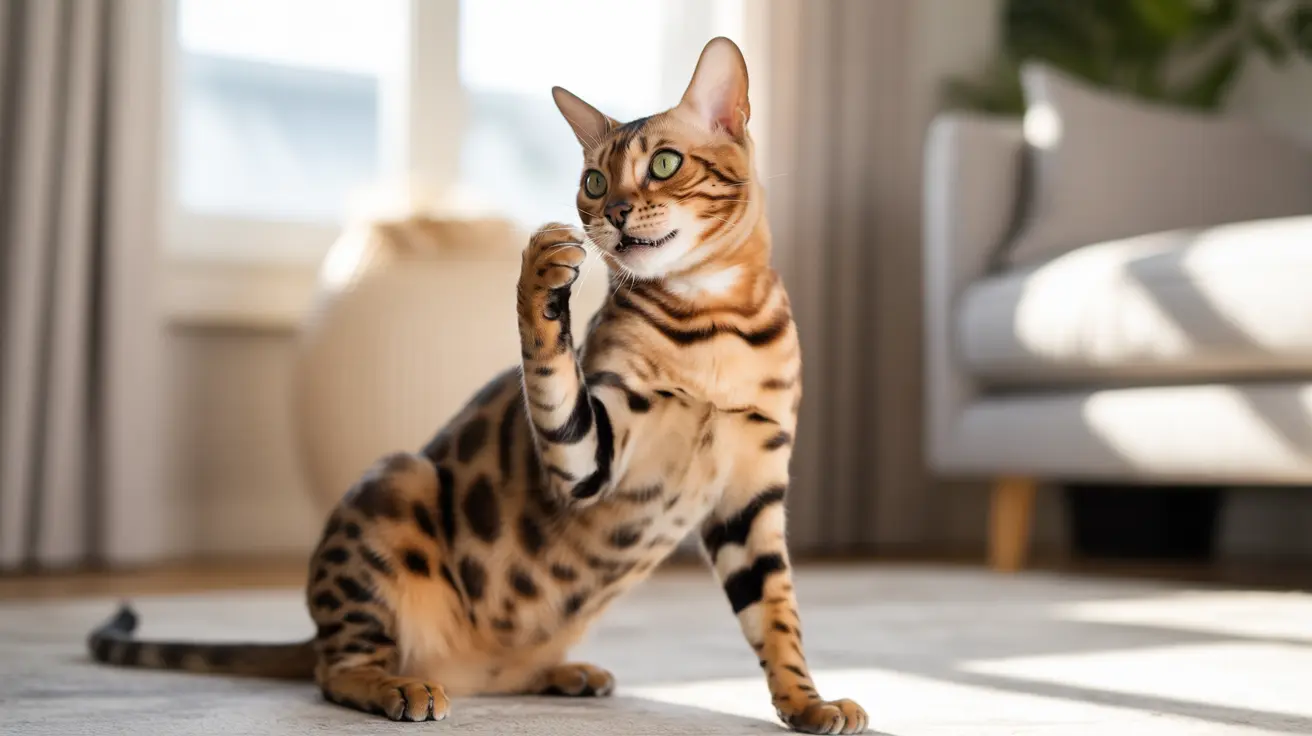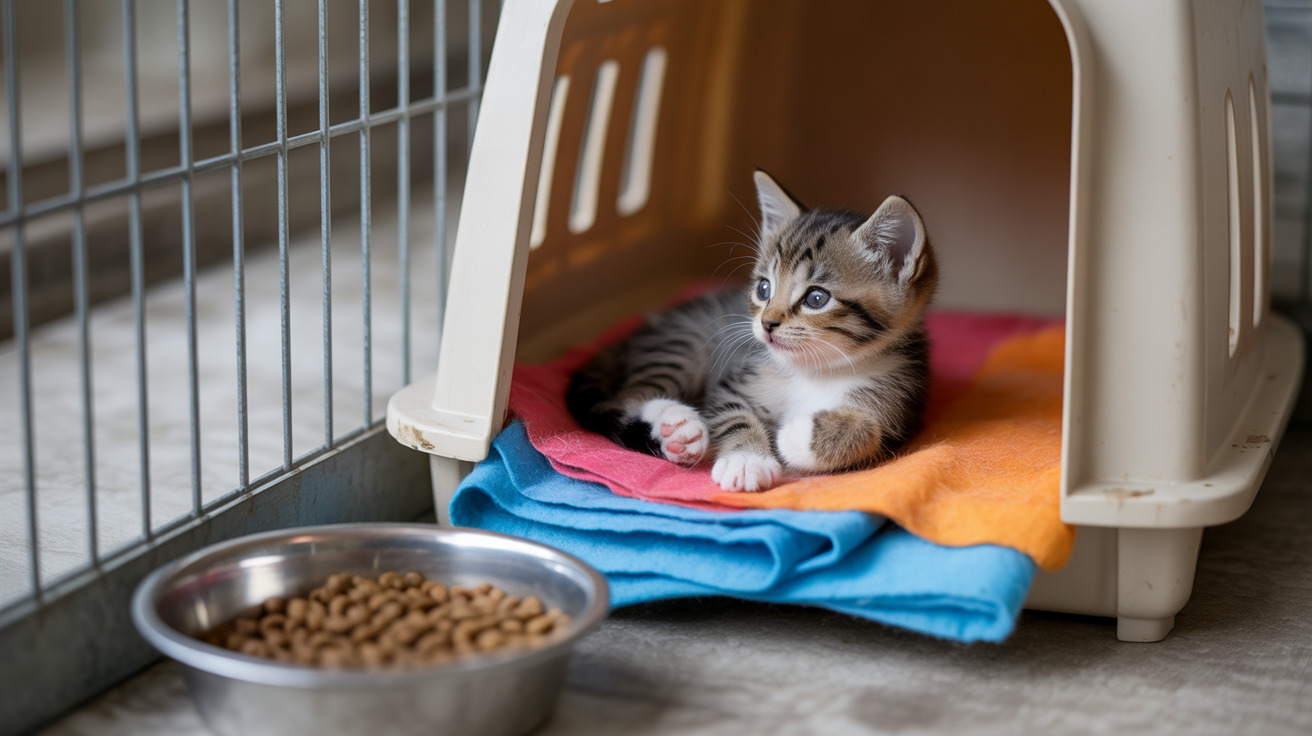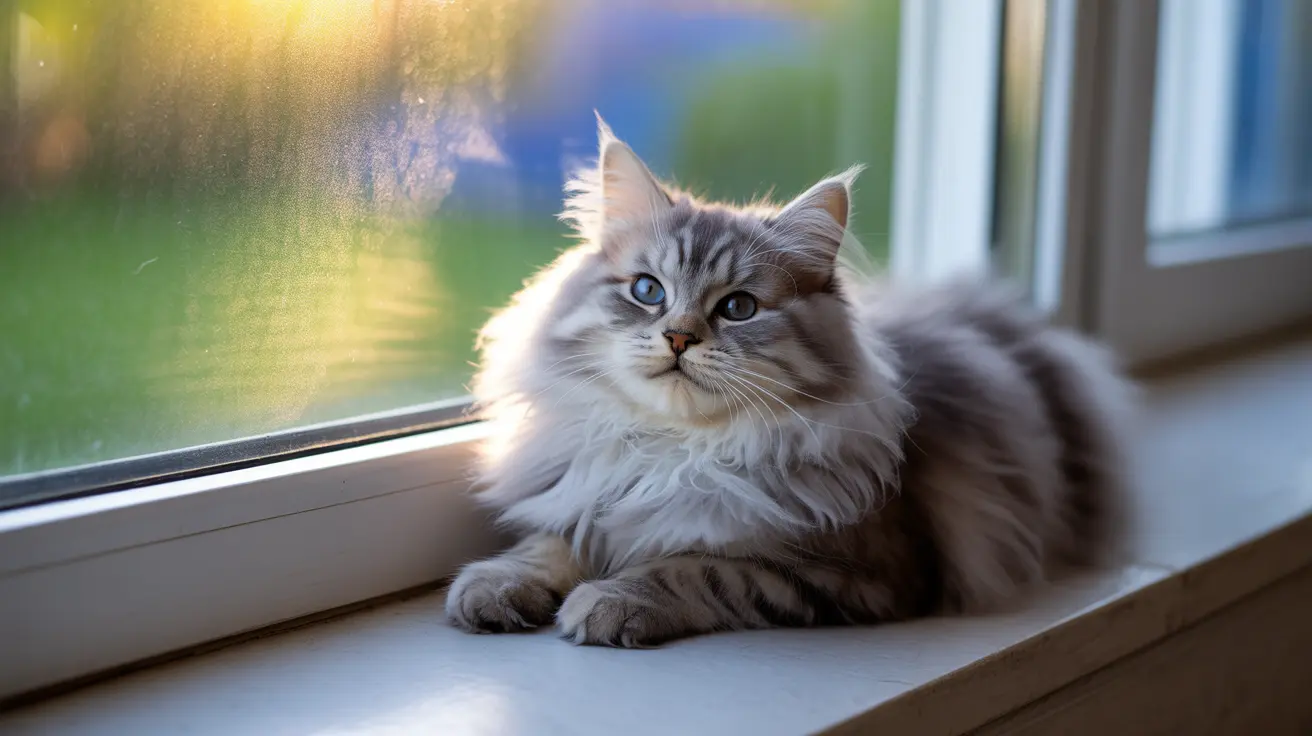The Fascinating Traits of Red (Ginger) Cats: Genetics, Behavior, and Cultural Significance
Red cats, also known as ginger or orange cats, captivate pet lovers worldwide with their striking coloration and distinctive personalities. These felines are celebrated annually on September 1st during Ginger Cat Appreciation Day, highlighting their special place in our hearts and homes. What makes these cats truly remarkable isn't just their beautiful orange, red, and gold hues, but the fascinating genetic story behind their coloration and the unique traits that set them apart from other felines.
Understanding the traits of red (ginger) cats involves exploring the intricate relationship between genetics, behavior, and cultural perceptions. These cats share surprising similarities with red-haired humans, from the pigments that create their distinctive coloring to the stereotypes that follow them throughout life. Whether you're a current ginger cat owner, considering adoption, or simply curious about these remarkable felines, this comprehensive guide will reveal the science, myths, and care considerations that make red cats truly unique.
The Genetics Behind Red Coat Color
The distinctive coloration of red cats stems from a fascinating genetic mechanism centered on the orange ("O") gene located on the X chromosome. This genetic arrangement creates a unique inheritance pattern that explains why approximately 80% of ginger cats are male. Male cats, possessing only one X chromosome, need just a single copy of the orange gene to display the characteristic ginger coloration, while females must inherit two copies—one from each parent—to achieve the same result.
Recent research has identified the specific genetic mutation responsible for this striking coloration: a small deletion near the ARHGAP36 gene on the X chromosome. This ancient mutation, which appears to be unique to domestic cats, activates the gene in pigment cells and blocks black pigment production, resulting in the beautiful orange fur we associate with ginger cats. The mutation is so old that calico cats, which carry this same genetic trait, appear in 12th-century Chinese art, demonstrating the long history of this distinctive coloration in feline populations.
Females with only one copy of the orange gene typically display tortoiseshell or calico patterning, creating the striking patched appearance that combines orange with other colors. This genetic reality means that truly solid orange female cats are relatively rare, making them particularly special when they do occur.
Understanding Tabby Patterns in Red Cats
One of the most important traits of red (ginger) cats is that they all exhibit some form of tabby pattern—truly solid red cats simply do not exist. These patterns manifest in several distinct variations, each contributing to the cat's unique appearance. The classic tabby pattern features bold swirls and spirals, while the mackerel tabby displays narrow stripes running parallel down the sides. Spotted tabbies showcase distinct spots rather than stripes, and ticked tabbies have individual hairs banded with different colors.
Perhaps the most recognizable feature across all ginger cats is the distinctive M-shaped marking on their foreheads. This characteristic tabby marking has inspired numerous myths and legends across cultures, often attributed to religious or mystical significance. The tabby patterns in ginger cats are not merely cosmetic—they represent the fundamental genetic expression that defines these remarkable felines.
Physical Characteristics and Health Considerations
Red cats develop several distinctive physical traits that owners should understand and monitor. Around two years of age, many ginger cats begin developing black freckles on their noses, mouths, paws, and other areas due to a genetic condition called lentigo. These freckles result from increased pigment cells and are completely harmless and cosmetic in nature, similar to freckles that develop in red-haired humans.
However, the light-colored fur that makes ginger cats so beautiful also creates specific health vulnerabilities. Their reduced pigmentation makes them more susceptible to skin conditions, including skin cancer, particularly on exposed areas like the nose and ears. Responsible owners should monitor these pigment spots for any changes and consider sun protection measures for cats that spend time outdoors or in sunny indoor areas.
Eye color in red cats varies considerably but frequently includes striking amber shades. Some red cats may have blue eyes, often linked to partial albinism genes common in light-colored cats, adding another layer of visual appeal to these already distinctive felines.
Behavioral Traits and Personality Characteristics
The behavioral traits of red (ginger) cats have long been a subject of fascination and study. Research consistently shows that ginger cats are often perceived as friendlier and more affectionate than cats of other colors, leading to higher adoption rates in shelters. Male ginger cats, in particular, are frequently described as "Velcro cats" due to their clingy nature and preference for lap sitting and close human contact.
Studies reveal interesting gender differences in ginger cat behavior. Male ginger cats tend to be more social, outgoing, and affectionate, while female ginger cats may exhibit greater aggression and irritability, particularly toward unfamiliar people. These behavioral differences may relate to the same genetic factors that influence their coloration, as the pigment pheomelanin responsible for orange fur is also found in red-haired humans and has been linked to different pain tolerance and sensitivity levels.
Many owners report that their ginger cats display exceptional intelligence, playfulness, and unique personalities ranging from gentle and cuddly to adventurous and mischievous. However, it's crucial to remember that individual personality differences outweigh any influence of coat color, and factors such as breed, upbringing, and environment play more significant roles in determining a cat's temperament.
The Science Behind Ginger Cat Stereotypes
The widespread belief that ginger cats possess distinctive personalities has both anecdotal support and scientific scrutiny. While veterinarians and cat behaviorists often observe that ginger cats appear more sociable and friendly, no definitive scientific evidence proves that coat color directly determines temperament. The perceived traits of red cats are largely influenced by human interpretations and cultural associations with their distinctive coloring.
The connection between the pigment pheomelanin and behavior provides an interesting parallel between ginger cats and red-haired humans. Both groups face similar stereotypes about being wild, mischievous, or having fiery temperaments, despite the lack of scientific proof linking hair or fur color to personality traits. These perceptions may influence how people interact with ginger cats, potentially reinforcing certain behavioral patterns through socialization.
Environmental factors also play a crucial role in ginger cat behavior. Research indicates that in rural environments, where mating systems are more polygynous, male ginger cats may exhibit larger size and greater social dominance. Conversely, in urban environments, these same traits might lead to increased mortality due to aggressive behaviors that don't suit city life.
Cultural Significance and Popular Media Representation
Red cats hold significant cultural importance across various societies, often featured in folklore, mythology, and popular media. The distinctive M-shaped marking on their foreheads has inspired numerous legends, including Christian and Islamic traditions that attribute protective or blessed roles to these cats. These cultural associations have contributed to the enduring fascination with ginger cats and their perceived special qualities.
In popular culture, famous ginger cats have become household names and cultural icons. Garfield, perhaps the most recognizable orange cat in media, has shaped public perceptions of ginger cats as lazy yet lovable companions with hearty appetites. Other notable ginger cats include Orangey from "Breakfast at Tiffany's," Puss in Boots from the "Shrek" series, and Milo from "The Adventures of Milo and Otis." These media representations often emphasize the adventurous, clever, and affectionate nature associated with ginger cats.
Special Care Considerations for Red Cat Owners
Caring for a red cat involves understanding their unique needs and potential health considerations. Owners should regularly monitor the black freckles that commonly develop around age two, watching for any changes in size, shape, or texture that might indicate skin issues. While these spots are typically harmless, any concerning changes warrant veterinary attention.
Sun protection becomes particularly important for ginger cats due to their light-colored fur and increased susceptibility to skin damage. Cats that spend time in sunny areas, whether outdoors or near windows, may benefit from pet-safe sunscreen on exposed areas like the nose and ear tips.
Many owners report that their ginger cats have robust appetites and may be prone to overeating, though this observation lacks scientific confirmation. Maintaining a healthy diet and monitoring weight becomes especially important to prevent obesity-related health issues. Regular veterinary checkups should include discussions about appropriate feeding schedules and portion sizes based on the individual cat's activity level and metabolism.
Understanding your ginger cat's social preferences is also crucial for their wellbeing. While many ginger cats are naturally sociable, some may show preferences for familiar people over strangers, particularly female ginger cats who may display more territorial behavior. Respecting these preferences while providing appropriate socialization opportunities helps ensure a well-adjusted and happy feline companion.
Adoption Considerations and Shelter Statistics
The traits of red (ginger) cats significantly impact their adoption rates and shelter experiences. Studies consistently show that ginger cats are perceived as more friendly and adoptable, often leading to shorter shelter stays compared to cats of other colors. This positive perception stems from both their striking appearance and the widespread belief in their friendly temperaments.
Prospective adopters should understand that while ginger cats may appear more approachable, individual personality assessment remains crucial. The genetic factors that create their beautiful coloration don't guarantee specific behavioral traits, and potential owners should spend time interacting with any cat they're considering adopting to ensure a good personality match.
For animal shelters and rescue organizations, understanding the appeal of ginger cats can inform adoption strategies and help ensure that cats of all colors receive equal attention and care. While ginger cats may naturally attract more attention, shelter staff can leverage this interest to educate potential adopters about the importance of personality compatibility over coat color preferences.
Frequently Asked Questions
- Why are most ginger cats male?
Approximately 80% of ginger cats are male due to the genetics of the orange gene, which is located on the X chromosome. Male cats only need one copy of this gene to be ginger since they have just one X chromosome, while females need two copies (one from each parent) to display the orange coloration.
- Do ginger cats really have different personalities than other cats?
While ginger cats are often perceived as friendlier and more social, scientific evidence doesn't prove that coat color directly determines personality. Individual differences in breed, upbringing, and environment have much stronger influences on a cat's temperament than fur color alone.
- What are the black spots that develop on my ginger cat's nose?
These black freckles are caused by lentigo, a harmless genetic condition that increases pigment cells. They typically appear around age two and are purely cosmetic, similar to freckles in red-haired humans. However, monitor them for changes and consult your veterinarian if you notice any concerning developments.
- Are ginger cats more prone to health problems?
Ginger cats may be more susceptible to skin conditions, including skin cancer, due to their light-colored fur providing less protection from UV radiation. They may also be prone to developing harmless pigment spots. Regular veterinary care and sun protection for outdoor cats help address these concerns.
- Can female cats be completely ginger?
Yes, but it's less common. Female cats need two copies of the orange gene (one from each parent) to be fully ginger. Females with only one copy typically display tortoiseshell or calico patterns instead of solid orange coloration.
- Do ginger cats actually eat more than other cats?
While many owners report that their ginger cats have hearty appetites, there's no scientific evidence proving they eat more than cats of other colors. Individual metabolism, activity level, and feeding habits vary more by cat than by coat color.
- Why do all ginger cats have tabby patterns?
The gene responsible for orange coloration is linked to tabby patterning, meaning truly solid ginger cats don't exist. All ginger cats display some form of tabby pattern, whether classic, mackerel, spotted, or ticked, along with the characteristic M-shaped marking on their foreheads.
Conclusion
The traits of red (ginger) cats represent a fascinating intersection of genetics, behavior, and cultural perception. From their X-linked inheritance pattern that makes males more common, to their universal tabby markings and the development of characteristic freckles, these cats showcase how genetics creates both beauty and unique care considerations. While scientific evidence doesn't support the idea that coat color directly determines personality, the consistent observations of ginger cats' friendly and social nature suggest that genetics, environment, and human perception work together to shape these remarkable felines.
Understanding these traits helps current and prospective cat owners provide better care while appreciating the individual personality that makes each ginger cat special. Whether you're drawn to their striking appearance, charmed by their reputation for friendliness, or simply fascinated by their genetic story, red cats continue to capture hearts and homes worldwide. Remember that while coat color may influence perception, the most important traits of any cat—their capacity for companionship, play, and affection—transcend genetics and emerge from the unique bond between each cat and their human family.






